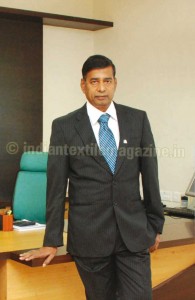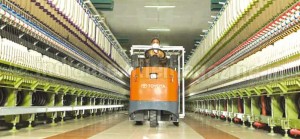
KPR’s journey into textiles began in 1984. In 1989, the group ventured into garment exports. Today KPR is a leading garment exporter as well as the largest vertically integrated apparel company engaged in manufacturing and marketing readymade knitted garments, knitted fabrics and cotton yarn, including value-added compact & melange yarn.
KPR Mill has a cumulative capacity of 3,53,088 spindles to produce 90,000 MT of yarn per annum, knitting facility to produce 21,000 MT of fabrics per annum, garmenting facility to produce 63 million pieces of ready-made knitted apparel per annum (operating double shift), a state-of-the-art processing facility to process 9,000 MT per annum and 66 wind mills with total power generation capacity of 61.92 MW which enables meeting 75 per cent of the company power requirement through Green Energy. To facilitate meeting the entire power needs through Green Energy, a Cogen-cum-Sugar factory with a capacity of 30 MW and 5,000 TCD has been established through a subsidiary company that has commenced production since November 2012. KPR Group’s consolidated turnover was Rs. 1,670.40 crores with a gross profit of Rs. 144 crores.
Mr. K.P. Ramasamy, Chairman, KPR Mill Ltd., says: “At KPR, we have the integrated capacity base in place supported by the increasing growth in customer relationships. We are going to leverage both these to gain market share and continue with our growth path. We remain cautiously optimistic on delivering results with a strong focus on delivering improved returns on capital employed. The major capex programme of the company for developing this large integrated production capacity have been completed. Going forward, the focus is on value added and balancing capex related capital investments”.
Consistent expansion with continuous focus on delivering value-added products with the best of quality to customers, combined with the recent diversification activities, has started yielding the desired results for the company. Sensing the prospects for value-added yarn the company has already expanded its compact yarn capacity and has established a melange yarn project at its Karumathampatti plant with a capacity of 16,128 spindles. Expansion and modernisation of the Sathyamangalam spinning plant has been completed.

The growing demand for quality yarn in global and domestic markets would be met with the expanded capacity built in. Similarly in the garment segment too there is adequate capacity to meet the market’s additional need. The company has started exploring new avenues to top up its global customer base from countries which remain untapped. Total self-sufficiency in meeting its power requirements was attained through Co-gen Green Power.
In order to overcome the problems faced due to power shortage, KPR produces 61.92 MW of alternate energy through its 66 wind mills that generate 75 per cent of the company’s power requirement through green energy. Its wind mills are set up at Tirunelveli, Tenkasi, Theni and Coimbatore districts.
The company’s own Co-gen Power-cum sugar unit in Karnataka has commenced production since November, 2012. Since power and fuel contribute largely to manufacturing costs while producing textiles, the wind mills and the captive power plant set up by the company help to completely mitigate the power cost risk by providing 100 per cent self-sufficiency in power.

The co-gen plant has a capacity to produce 30 MW of green energy, and the capacity of the sugar plant stands at 5,000 TCD. For consistent production of higher quality products, besides having state-of-the-art machinery and equipments, each of its manufacturing facilities is equipped with well trained personnel, high-tech quality control equipments and a zero discharge system of ETP at the processing division.
KPR’s yarn sales increased by 39 per cent and that of its fabric by 57 per cent. The company’s overall exports grew by 10 per cent, accounting for nearly 28 per cent of the company’s sales sustaining its strong relationships with leading global brands. The management owes its improved performance in both domestic and export markets to its vertical integration and self-sufficiency in power.